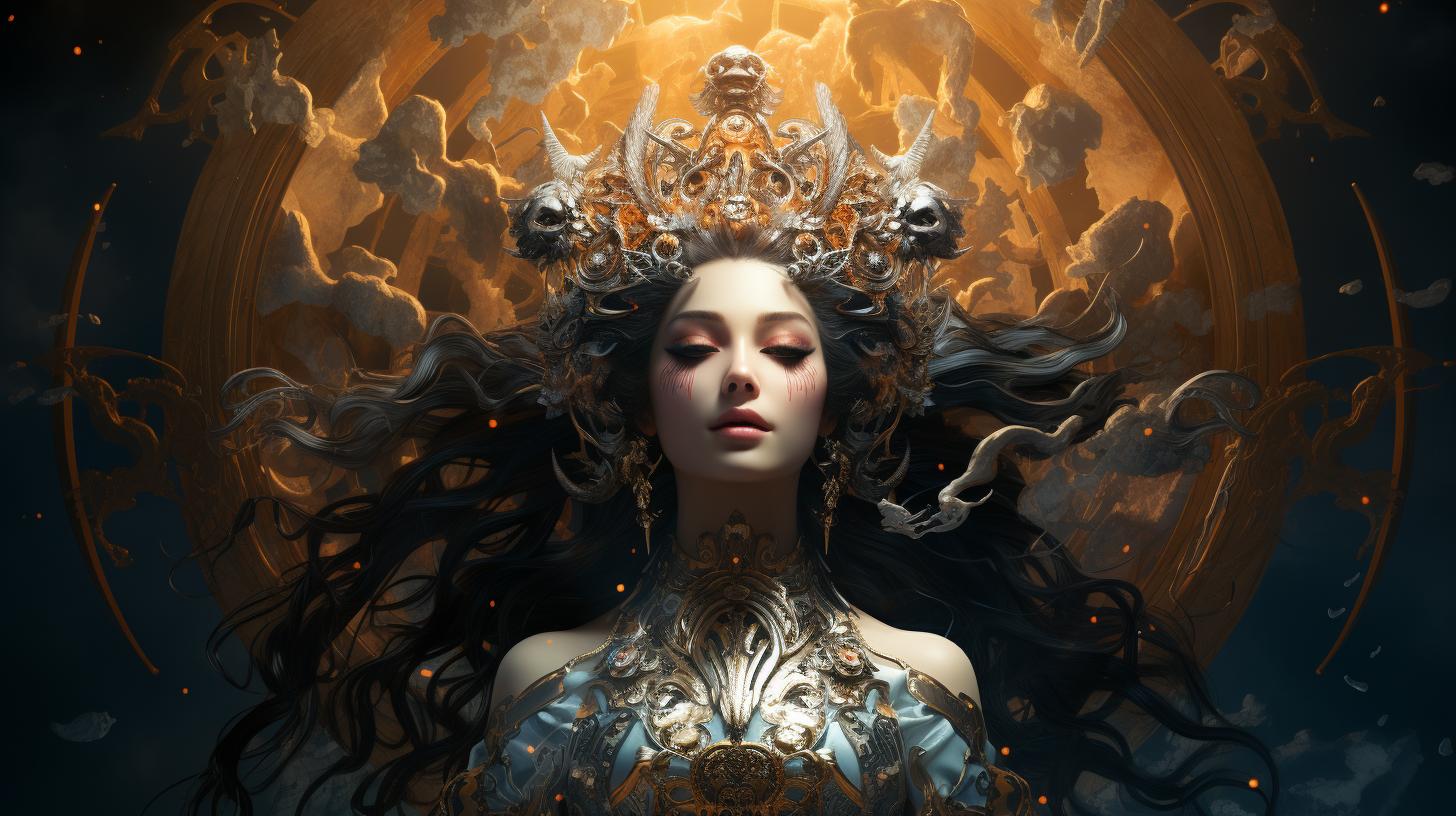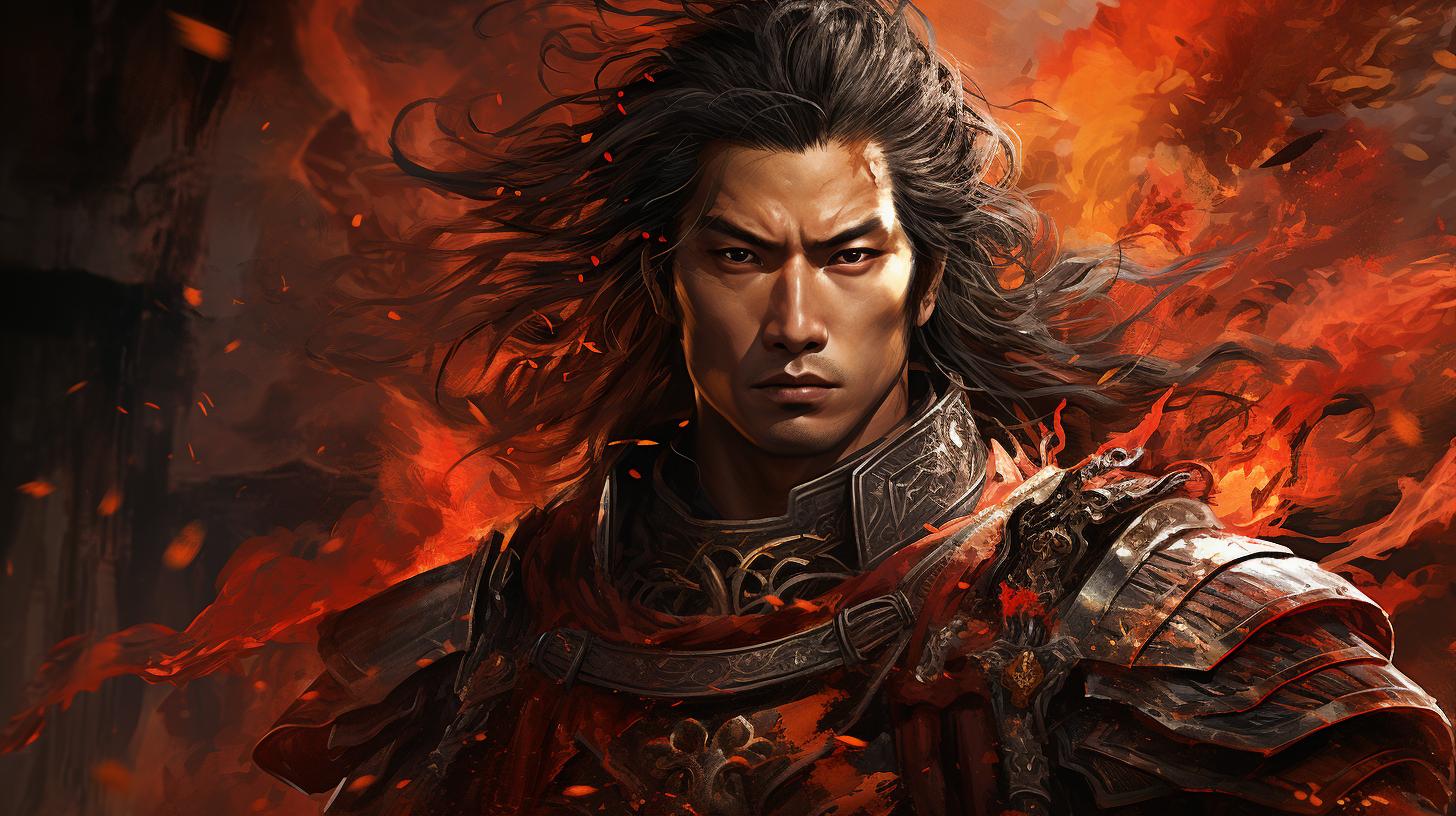Mazu Chinese Goddess: Discover the Divine Power of Mazu in Chinese Culture

Mazu Chinese goddess holds a significant place in Chinese culture. Discover the origins, temples, and celebrations dedicated to this divine figure. Mazu’s legend and history are traced back through the centuries.
The temples devoted to Mazu serve as sacred places for worship and pilgrimage, showcasing remarkable architecture and art. Mazu’s influence extends to vibrant celebrations and festivals, such as the Mazu Festival and colorful processions.
Today, Mazu remains relevant, particularly in Taiwan and mainland China, ensuring the preservation of her legacy as intangible cultural heritage.
Mazu Chinese Goddess: Exploring the Divine Figure of Mazu
Mazu, the revered Chinese goddess, holds a significant place in Chinese culture and religion. This section delves into the exploration of this divine figure, shedding light on her history, worship, and cultural importance.
Mazu has captivated the hearts of millions with her aura of benevolence and protection. She is widely known as the guardian of seafarers and fishermen, offering solace and guidance in their perilous journeys.
Mazu’s depiction varies in different forms of artwork, each showcasing her divine grace and protective nature. Numerous legends and folklore surround her, further deepening the enigma of Mazu.
Devotion to Mazu is evident in the presence of her temples throughout China and Taiwan. These sacred sites serve as places of profound worship and pilgrimage for countless believers. Mazu temples are known for their beautifully ornate architecture, transporting visitors into a world filled with spiritual significance and tranquility.
The cultural value attached to these temples cannot be overstated, as they stand as symbols of veneration and faith.
Significance of Mazu Temples in Chinese Culture
Mazu temples hold immense cultural significance in Chinese society. Beyond serving as places of worship, they are key centers for community gatherings, religious ceremonies, and cultural events.
These temples foster a sense of unity and spirituality among followers, reinforcing the noble values encapsulated by Mazu.
The architecture and artistry found within Mazu temples are awe-inspiring. Intricately carved sculptures, vibrant wall paintings, and elaborate decorations create an ambiance unique to each temple.
The exquisite craftsmanship and attention to detail exemplify the devotion and reverence bestowed upon Mazu.
An integral part of Mazu’s legacy is the vibrant celebration and festivals dedicated to her. The Mazu Festival stands as a testament to the deep-rooted faith and devotion of her followers.
This grand event attracts visitors from all walks of life, offering a glimpse into the rich cultural tapestry of Chinese traditions.
Mazu Festival: Honoring the Deity
The Mazu Festival is a spectacular spectacle that commemorates the life and deeds of Mazu. Elaborate processions, colorful parades, and traditional performances fill the streets as a tribute to this revered goddess.
The festival serves not only as a religious occasion but also as a vibrant cultural celebration that showcases the deep ties between the Chinese people and their folklore.
Mazu Processions: Devotion and Commemoration
Processions dedicated to Mazu are a display of unwavering devotion and reverence. Devotees in traditional garments carry ornate palanquins holding sacred statues of Mazu, parading through the streets amidst chants and offerings.
These processions are a powerful symbol of unity and respect, creating an atmosphere of spiritual connection and shared beliefs.
Mazu’s influence extends beyond ancient times and continues to thrive in the modern era. In Taiwan and mainland China, devotees maintain their deep-seated devotion, keeping the flame of faith alive. The relevance of Mazu in contemporary society serves as a testament to her enduring power and profound impact on Chinese culture.
Mazu remains an integral part of religious and cultural practices in both Taiwan and mainland China. The goddess is revered for her ability to safeguard individuals from harm and bring good fortune.
The ongoing devotion to Mazu showcases the unwavering connection between the people and their spiritual beliefs.
Preservation of Mazu’s Legacy and Intangible Cultural Heritage
Efforts to preserve Mazu’s legacy and intangible cultural heritage are paramount in ensuring that her traditions endure for future generations. Organizations and individuals work tirelessly to safeguard the rituals, art forms, and customs associated with Mazu, actively passing on this rich heritage to posterity.
In conclusion, the exploration of Mazu, the Chinese goddess, unveils a tapestry of history, worship, and cultural significance. From her origins to the enduring festivals and temples, Mazu holds a treasured place in the hearts of those who seek her divine protection and guidance.
Origins of Mazu: Tracing the Legend and History
Mazu, the revered Chinese goddess, has a rich and captivating origin that dates back centuries. According to legend, Mazu was born as Lin Moniang in the year 960 AD in Meizhou, Fujian province.
Her extraordinary powers and benevolent spirit began to manifest at a young age, leading to her eventual deification.
The story of Mazu’s origins is steeped in folklore and mythical tales. One popular legend recounts how Lin Moniang’s father was a fisherman who often ventured out to sea, facing the dangers of treacherous waters.
Lin Moniang, driven by her deep love for her father and her empathy for all those at sea, decided to safeguard him and other seafarers.
With her innate ability to navigate storms and protect those in need, Lin Moniang became known as Mazu, the goddess of the sea, revered for her remarkable powers in guiding ships to safety and preventing calamities at sea.
Mazu’s emergence as a divine figure quickly spread throughout coastal regions, with countless people placing their faith in her protection and guidance.
As time went on, the cult of Mazu grew, and her influence extended beyond seafarers. Mazu became known as the patron deity of sailors, fishermen, and coastal communities. Her reputation spread to other parts of China and Southeast Asia, where her devotees sought her blessings and support in their quests for safe travels and abundant catches.
The legend of Mazu’s origins and her subsequent deification served to inspire awe and reverence among her followers. With her divine nature and compassionate spirit, Mazu continues to be celebrated and worshipped today, embodying the hopes and aspirations of those who depend on the sea for their livelihood and well-being.
- Mazu was born as Lin Moniang in Meizhou, Fujian province, in 960 AD.
- Her extraordinary powers and benevolent nature led to her deification.
- Legend tells of how she protected her father and all seafarers, guiding them to safety.
- Mazu’s reputation extended beyond seafarers, becoming the patron deity of coastal communities.
- Her origins and subsequent deification inspire awe and devotion among her followers.
Mazu Temples: Sacred Places of Worship and Pilgrimage
The Mazu temples hold immense significance in Chinese culture, serving as sacred places of worship and pilgrimage for devotees.
These temples are dedicated to honoring Mazu, the revered Chinese goddess known for her divine powers and guardianship over the seas. Mazu temples are widespread throughout Taiwan and mainland China, reflecting the deep-rooted faith and cultural importance of this deity.
Significance of Mazu Temples in Chinese Culture
The Mazu temples carry great cultural and religious significance in Chinese society. They serve as spiritual sanctuaries where believers seek blessings, guidance, and protection from Mazu. These temples are spaces where devotees express their devotion and faith through rituals, prayers, and offerings.
The presence of Mazu temples underscores the lasting influence and reverence for this powerful goddess in Chinese spiritual practices.
Architecture and Art of Mazu Temples
Mazu temples are not only spiritual spaces but also architectural marvels that showcase intricate craftsmanship and artistic expressions. The design of these temples often merges traditional Chinese architectural styles with unique elements symbolizing Mazu’s connection to the sea.
Elaborately carved pillars, decorative motifs, and colorful murals depicting stories from ancient Chinese legends adorn the interior and exterior of the temples. The combination of architectural beauty and symbolic artwork creates an awe-inspiring atmosphere for visitors and worshipers.
Elaborate Temple Structures
Mazu temples feature impressive structures with prominent entrances, multiple halls, and ornate roofs. The main hall, housing the shrine of Mazu, is typically the most sacred space within the temple complex.
Symbolism in Decorative Elements
The decorative elements in Mazu temples hold significant symbolism related to the sea, maritime culture, and the divine powers of Mazu herself.
Dragons, sea creatures, and maritime symbols are often depicted to represent Mazu’s dominion over the water.
Sacred Artworks and Statues
The interior of Mazu temples is adorned with exquisite artworks, including intricate wood carvings, sculptures, and painted murals. These masterpieces narrate the stories and legends associated with Mazu and contribute to the overall beauty and spiritual ambiance of the temples.
The architecture and artistry of Mazu temples exemplify the rich cultural heritage of Chinese traditions and serve as a testament to the enduring devotion to Mazu as a revered goddess.
Mazu’s Cultural Influence: Celebrations and Festivals
Mazu, the Chinese goddess, is revered through various celebrations and festivals that honor her divine presence. These events showcase the profound cultural influence Mazu holds on Chinese society and highlight the devotion and commemoration associated with her worship.
Mazu Festival: Honoring the Deity
The Mazu Festival is a grand annual celebration dedicated to honoring the deity. It is a time when believers gather to express their reverence and seek blessings from Mazu. This vibrant festival features elaborate rituals, processions, and performances that immerse participants in a spiritual and festive atmosphere.
During the Mazu Festival, devotees embark on pilgrimages to Mazu’s temples, expressing their gratitude and praying for health, prosperity, and protection. They offer various offerings and participate in rituals, such as lighting incense and burning paper money, symbolizing their devotion and respect to Mazu.
Mazu Processions: Devotion and Commemoration
Mazu processions are an integral part of the cultural influence surrounding this revered goddess. These processions involve elaborate parades that showcase religious icons, ornate floats, and traditional performances. Participants, often dressed in colorful traditional attire, carry statues of Mazu and march through the streets, accompanied by rhythmic music and enthusiastic chants.
- The processions symbolize the devotion of believers and their desire to honor and commemorate Mazu’s divine power.
- These lively parades attract crowds of locals and tourists, fostering a sense of community and cultural identity.
- Throughout the processions, participants engage in various traditional customs, such as lighting firecrackers and releasing floating lanterns, believed to bring good fortune and ward off evil spirits.
The Mazu processions serve as a powerful expression of faith, bringing people together to celebrate and pay homage to the Chinese goddess.
They not only reinforce the cultural heritage associated with Mazu but also exemplify the enduring impact she has on the lives and traditions of the Chinese people.
Mazu in Modern Times: Contemporary Devotion and Practices
In the present day, Mazu continues to hold significant relevance in Taiwan and mainland China, where her worship and practices thrive. With a history spanning centuries, Mazu’s cultural influence remains strong and continues to shape the lives of many.
Mazu’s Relevance in Taiwan and Mainland China
In Taiwan, Mazu is considered the patron deity, and her influence can be felt in various aspects of society. Taiwanese people hold deep reverence for Mazu, seeking her guidance and protection in their daily lives.
Mazu’s temples are a common sight, with devotees flocking to offer prayers and seek blessings.
Mainland China also recognizes the cultural significance of Mazu, particularly in coastal regions and areas with a strong maritime tradition. Communities celebrate Mazu as a guardian against disasters at sea, emphasizing her role as a protector and source of strength for fishermen, sailors, and travelers.
Preservation of Mazu’s Legacy and Intangible Cultural Heritage
Efforts are being made to preserve Mazu’s legacy and intangible cultural heritage for future generations. Institutions and organizations dedicated to the study and promotion of traditional Chinese culture actively work to safeguard the rituals, customs, and practices associated with Mazu worship.
Various initiatives, such as documentation projects, exhibitions, and educational programs, aim to raise awareness about Mazu and her significance. These endeavors not only ensure the continuity of Mazu’s traditions but also foster an appreciation for the rich cultural heritage she represents.
.




















